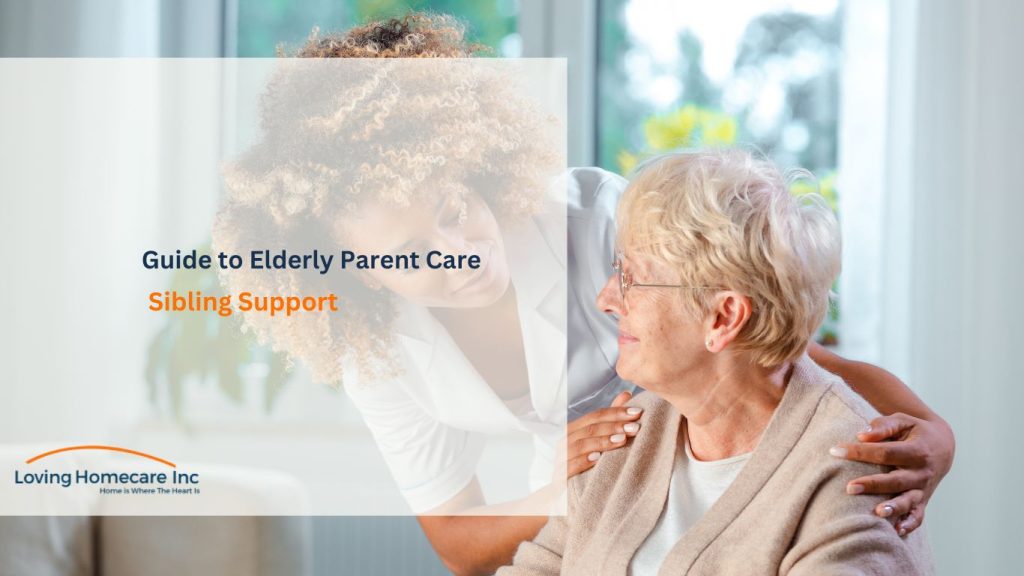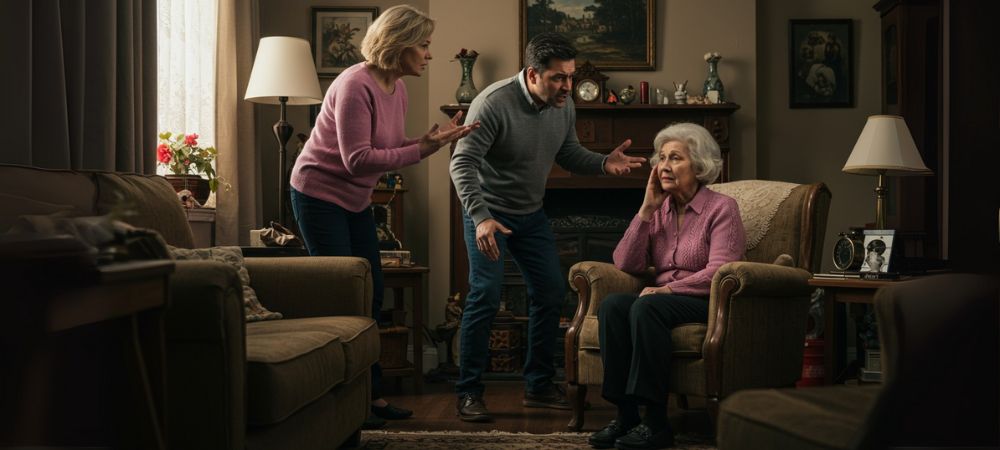Recently updated on July 30th, 2025 at 08:55 am
Introduction: The Hardest Conversation is the Most Important One
Caring for aging parents or aging parents and elder care is a deeply emotional and often stressful experience, one that can bring to light family dynamics that have been dormant for years. The challenge of making decisions about their care, particularly when siblings are involved, can be overwhelming. Whether it’s deciding who should take on the primary caregiving role or how to share the financial responsibility, these conversations can easily lead to conflict. Yet, no matter how difficult, these discussions are critical to ensuring your parent’s well-being.
This article is here to help you navigate these tough conversations about how to talk to siblings about aging parents, providing a structured framework to address potential disagreements and create a collaborative care plan. The Sibling’s Guide to Agreeing on a Parent’s Care is designed to guide you through the decision-making process with clarity and empathy. Whether your goal is to help your parent age in place or transition to a more supported environment, this approach focuses on working together for the best possible outcome.
Step 1: Hold a Structured and Respectful Family Meeting
Why an “Official” Meeting is Better Than a Casual Chat
The first step in caring for elderly parents! What to do when siblings won’t help with elderly parents is often the most difficult, having the conversation with your siblings. Informal chats, although they may seem easier, often fail to cover all the important points or, worse, end in emotional arguments. This is especially true when sibling conflict over care of elderly parent has already begun to surface.
A structured family meeting for aging parents helps keep the conversation on track, ensuring that every concern is addressed. This approach is crucial in preventing sibling disagreements over care of aging parents and promoting a shared understanding of what needs to happen. AARP emphasizes the importance of starting this process early to avoid misunderstandings that could escalate into serious disputes down the line. If you are not sure where to start, we can help guide your first family meeting agenda for elderly care template.
Setting the Ground Rules: No Blame, No Interruptions
Start the meeting by setting clear ground rules: no interrupting, no blaming, and no emotional outbursts. Sibling dynamics can bring up old tensions, and if one person feels they’re doing more than their fair share, caregiver burnout can quickly follow. Establishing these boundaries ensures that everyone can speak without fear of judgment and that the conversation remains productive.
A Practical Agenda for the First Meeting
A well-structured agenda will keep the meeting focused and productive. Here’s an example of how to approach the first discussion:
- Parent’s Health Assessment: Acknowledge the current state of your parent’s health, including their ability to perform Activities of Daily Living (ADLs) and Instrumental Activities of Daily Living (IADLs).
- Caregiver Roles: Clearly define who will take on which responsibilities.
- Financial Planning: Discuss how to manage the costs of caregiving, from insurance to long-term care options.
- Next Steps: Schedule follow-up meetings and regular check-ins to ensure progress is made.
By following this agenda, you can prevent the miscommunication that often leads to family conflict resolution issues.
How to Include Long-Distance Siblings Effectively (Video Calls)
Family members who live far away may struggle to participate in elder care decisions. Video calls make it possible for long-distance siblings to stay involved, helping to bridge the gap between geographic distance and emotional connection. Tools like Zoom or Skype offer a convenient way to connect with everyone and ensure that the voices of all siblings are heard.
If you are looking for ways to improve communication with remote siblings, explore more on how to facilitate better virtual family meetings on our aging in place blog.
Step 2: Assess Your Parent’s Needs Objectively, Together
Moving Beyond “I Think Mom is Fine”: Using Facts Over Feelings
One of the hardest things to do when caring for aging parents is accepting that their ability to live independently may be deteriorating. It’s easy to feel that everything is fine or to rely on feelings rather than facts, but this can lead to inadequate care and caregiver burnout. Instead, approach this assessment with objective data: how well can your parent perform basic tasks like dressing, bathing, or cooking?
Use the framework of ADLs and IADLs to help structure your assessment. These are crucial in determining whether your parent can continue to age in place or if they require assistance with daily living activities.
Pro Tip: If you’re unsure how to assess these areas, you might want to reach out to a geriatric care manager to get professional insights. They can help you evaluate your parent’s current level of functioning and recommend the right care options.
When to Involve a Professional: Consulting with Doctors or Geriatric Care Managers
Consulting with professionals, such as a geriatric care manager, ensures that your decisions are based on expert advice rather than assumptions. According to the National Institute on Aging (NIA), it’s vital to involve healthcare professionals who can help you understand when to seek additional support, such as hiring a caregiver or considering an alternative care setting, like assisted living.
If your family needs expert guidance on making these crucial making decisions for aging parents, consider scheduling a consultation with a geriatric care manager. These professionals can help you with decisions about aging in place and assessing when a higher level of care is needed.
Additionally, involving an elder law attorney can help in addressing legal aspects of caregiving, including creating a living will or health proxy. These documents are crucial in ensuring your parent’s wishes are respected should they be unable to make decisions for themselves.
Gathering Key Information: Medications, Doctors, and Financial Documents
Having all of your parent’s important documents in one place will make it easier to make informed decisions. Gather details about your parent’s medications, medical history, insurance, and financial situation. This ensures that everyone is on the same page and helps prevent any misunderstandings when it comes to managing their care.
Step 3: Define Roles & Responsibilities Fairly (Not “Equally”)
The Primary Caregiver vs. The Support Team: Acknowledging Different Contributions
It’s essential to understand that caregiving is rarely a 50/50 split. Some siblings may have more time or capacity to handle the hands-on care, while others might be better suited for managing finances or legal documents. By assigning roles based on strengths rather than trying to divide everything equally, you avoid the potential frustration of sibling disagreements and ensure that each sibling feels appreciated.
However, when sibling disputes over elderly mother arise, it’s important to address them openly and respectfully and think on how to get siblings on the same page for mom’s care. These disputes often stem from differing expectations or unresolved family dynamics, so it’s crucial to encourage honest conversations where everyone’s concerns are heard. If necessary, seeking mediation from a neutral third party, such as a family therapist or geriatric care manager, can help find common ground and prevent escalating tensions.
If legal matters arise, such as managing your parent’s living will or power of attorney (POA), having an elder law attorney involved can provide guidance to ensure everything is in order. Additionally, if emotional or logistical disputes arise, a family mediator can be an excellent resource for helping siblings navigate disagreements and find common ground.
Assigning Key Roles: The Hands-On Helper, The Financial Manager, The Researcher, The Communicator
Clearly define roles based on your family’s needs. One sibling might focus on hands-on care, while another could manage appointments or serve as the communicator to keep everyone updated. It’s essential that each person understands their role to prevent the feeling that “one sibling does everything.”
Addressing the “One Sibling Does Everything” Problem
When one sibling takes care of parents, it can lead to feelings of resentment and burnout. To avoid this, have an open discussion about the roles and responsibilities that which sibling should take care of parents, and if necessary, consider outside help such as respite care to relieve the primary caregiver from time to time. If a sibling isn’t able to help, whether due to distance or personal issues, look into alternatives to ensure that the care plan remains balanced.
Step 4: Create a Transparent Financial Plan
The Money Talk: Getting All Financial Cards on the Table
Financial transparency is key in preventing conflicts, especially when sibling conflict over care is related to money. The costs of caring for aging parents from in-home care to medical expenses, can quickly add up, so it’s crucial to be open about the financial situation. Explore all funding options such as long-term care insurance, Medicaid, or Veterans benefits to ensure that everyone is aware of available resources.
For more guidance on cost of care and funding options, check out our comparison guide between in-home care, assisted living, and nursing homes.
What Does Care Actually Cost? (Researching In-Home Care vs. Assisted Living vs. Nursing Homes)
It’s important to evaluate different care options and their costs. In-home care might be less expensive but could require modifications to your parent’s living space. On the other hand, Assisted Living vs. In-Home Care vs. Nursing Home may offer more comprehensive care but can be significantly more costly. By understanding the costs associated with each option, you can make informed decisions about what will best suit your parent’s needs and your family’s budget.
Step 5: Document Your Plan and Schedule Regular Check-ins
Why a Written “Caregiver Agreement” Prevents Future Misunderstandings
Having a caregiver agreement in writing helps to prevent future conflicts by clearly outlining each person’s role, financial obligations, and how to divide caregiver duties fairly. This document serves as a reference point, ensuring that all siblings are on the same page and reducing the chances of misunderstandings. For example, one sibling may handle in-home care visits, while another is responsible for finances or managing a HIPAA Release Form to allow healthcare providers to share important information with the caregivers.
The Power of a Shared Calendar for Appointments and Visits
A shared digital calendar can help coordinate visits, appointments, and responsibilities. This is particularly useful for keeping everyone in the loop, whether siblings are living nearby or managing care from a distance.
Planning for the Unexpected and Preventing Caregiver Burnout
Caregiver burnout is a real concern, and planning for the unexpected can help ease this burden. If one caregiver needs a break or faces an emergency, it’s important to have a backup plan in place. Consider using respite care to provide temporary relief for primary caregivers, ensuring they can recharge and avoid burnout.
Conclusion: Moving Forward with Unity and Purpose
Caring for aging parents is an ongoing process that requires patience, flexibility, and ongoing communication. By following these steps—holding structured family meetings, assessing needs objectively, defining roles clearly, creating a financial plan, and documenting your caregiving agreement, you’re setting your family up for success. The key to managing family care plans for elderly parents is not perfection, but progress, and by collaborating with your siblings, you can ensure that your parent receives the best possible care.
Are you feeling overwhelmed or unsure about the next steps? Let’s talk. Loving Homecareis here to listen and guide you through every stage of this process. Contact us today for a no-obligation consultation to discuss your family’s unique needs and caregiving plan.




